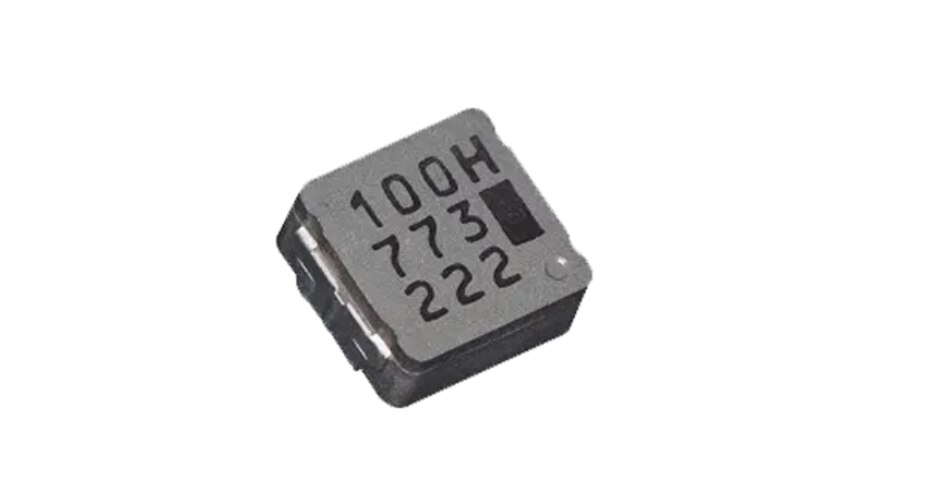Known as pioneers of metal composite power inductor technology, Panasonic Industry has undoubtedly made a name for itself - but the industries’ rapid developments and increased demands on the specs of passive components wouldn’t allow any rest on the laurels:
Depending on the area and specific application, the demands are as high and differentiated as never before: From higher currents, better resistance to vibrations, lower losses for specified frequencies up to serving the trend for miniaturization: In the following, we attempt to illustrate the power inductors’ diversification in a brief summary:
1) High Power
As the number of electric components per vehicle is ever increasing, the required currents are increasing accordingly. Since the market introduction of the Panasonic MC series in 2004, the current specification of the ETPQ power choke coils raised steadily. Currently, the ETQP8M***JFA - series in the dimensions of 12x12mm reveals the highest-rated current specification with 53A. Due to the newly developed integral construction, it also comes with very high resistance of up to 30G against vibrational shocks, which is unmatched for metal composite power inductors of that size.

Picture: ETQP8MR68JFA
Panasonic Industry follows the automotive industry’s needs to offer ever smaller and more compact power inductors with ever-higher current capabilities. Based on the innovative design of the ETQP8M***JFA - series, the ETQPAM***JFW - series has been developed with dimensions of 15x15x10mm and current capabilities of up to 73A. This innovative series significantly exceeds the current capabilities of comparable products in the market due to reduced DC-losses and an optimized magnetic flow within the metal core. The ETQPAM***JFW - series is specifically targeted to 48V-DCDC converters which require very high current capabilities - and enables customers to further downsize their systems.
2) Robustness
Since the first developments on a metal composite power inductor for automotive applications started at Panasonic, robustness has been a major topic. As electronic systems became more and more integrated, they got positioned closer and closer to the engines of a vehicle. This of course requires high robustness against vibrational shocks to guarantee long-term mechanical durability. At the time of introduction, the MC series was already a major improvement compared to conventional ferrite inductors with specified robustness of 10G. Over the years, the design and production process of Panasonic power choke coils improved remarkably. This leap in know-how resulted in the development of the ETQP*M***YS* - series, offering industry-leading vibration robustness of up to 50G. It is specifically targeted at ECUs which are situated in the engine itself or mechanical-electrical-integrated ECUs.

Picture: ETQP5MR68YSC
3) Low Power Loss
As another area of research, Panasonic Industry investigates the development of power choke coils with minimal losses. The latest innovation in this area is the ETQ-P3M***HF* - series optimized for frequencies up to 5MHZ. It was specifically developed for power circuits in ADAS applications as well as navigation and telematics systems. Both the magnetic material and the winding technology have been developed in-house at Panasonic Industry, resulting in a compact high precision and high-performance coil, that comes with a convincingly reduced volume ratio of 30% when compared to existing products.

Picture: ETQP3M100HFN
4) Miniaturization
As the electronic industry places a great focus on efficiency, engineers are expected to create products that are thinner, lighter and smaller. The first metal composite power choke coils introduced by Panasonic measured 10x10mm. Over the years, the PCC family got more and more compact members - 8x8mm, 7x7mm, 6x6mm and 5x5mm. Smaller and smaller housings are made possible due to a new innovative production process and are in great demand for ADAS, Radar and Lidar applications.
5) High current (Industry)
With its extensive knowledge about metal composite power inductors, Panasonic Industry also supports industrial and consumer applications. The latest developments are focused on high current applications for Server and GPU accelerators, where the power inductors are designed in DC/DC converters of step-down circuits of CPU or GPU circuits.
The world of electronic innovations is spinning faster than ever - which actually means: as fast as the technology of the installed components allows.
That “one inductor for everything” no longer exists - the demands have become highly diversified, so it pays for every product designer to remain attentive and up to date which specs would be the right ones for their own project.
